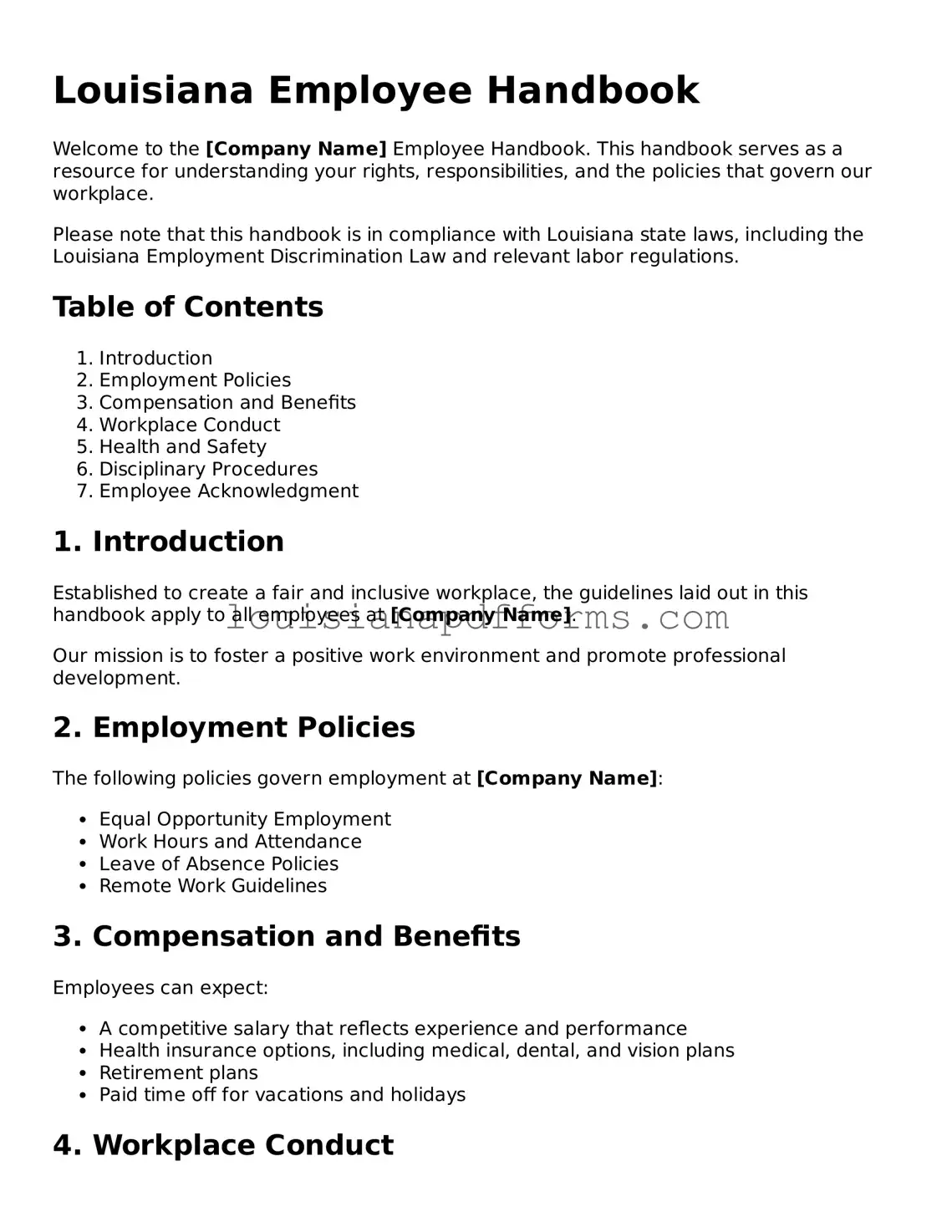Louisiana Employee Handbook
Welcome to the [Company Name] Employee Handbook. This handbook serves as a resource for understanding your rights, responsibilities, and the policies that govern our workplace.
Please note that this handbook is in compliance with Louisiana state laws, including the Louisiana Employment Discrimination Law and relevant labor regulations.
Table of Contents
- Introduction
- Employment Policies
- Compensation and Benefits
- Workplace Conduct
- Health and Safety
- Disciplinary Procedures
- Employee Acknowledgment
1. Introduction
Established to create a fair and inclusive workplace, the guidelines laid out in this handbook apply to all employees at [Company Name].
Our mission is to foster a positive work environment and promote professional development.
2. Employment Policies
The following policies govern employment at [Company Name]:
- Equal Opportunity Employment
- Work Hours and Attendance
- Leave of Absence Policies
- Remote Work Guidelines
3. Compensation and Benefits
Employees can expect:
- A competitive salary that reflects experience and performance
- Health insurance options, including medical, dental, and vision plans
- Retirement plans
- Paid time off for vacations and holidays
4. Workplace Conduct
We expect all employees to maintain a professional atmosphere. Behaviors that contradict our values include:
- Harassment or Discrimination
- Substance Abuse
- Insubordination
- Theft or Misappropriation of Company Property
5. Health and Safety
Your safety is our priority. [Company Name] ensures:
- Regular health and safety training
- Accessibility of emergency procedures
- Compliance with OSHA regulations
6. Disciplinary Procedures
Compliance with company policies is essential. Disciplinary action may result from:
- Violations of company policies
- Performance issues
- Unethical behavior
7. Employee Acknowledgment
All employees must acknowledge receipt of this handbook by signing below:
________________________ [Employee Name] Date: _______________
________________________ [Company Representative] Date: _______________
Thank you for taking the time to read this handbook. Your understanding of our policies helps create a positive work environment for everyone at [Company Name].
